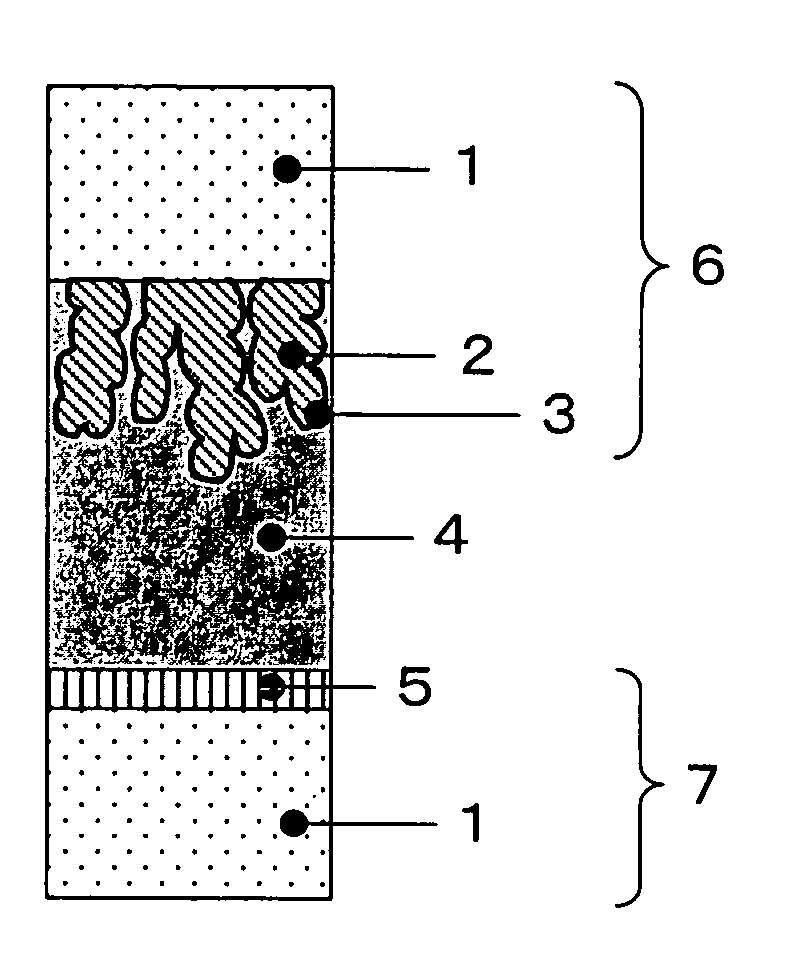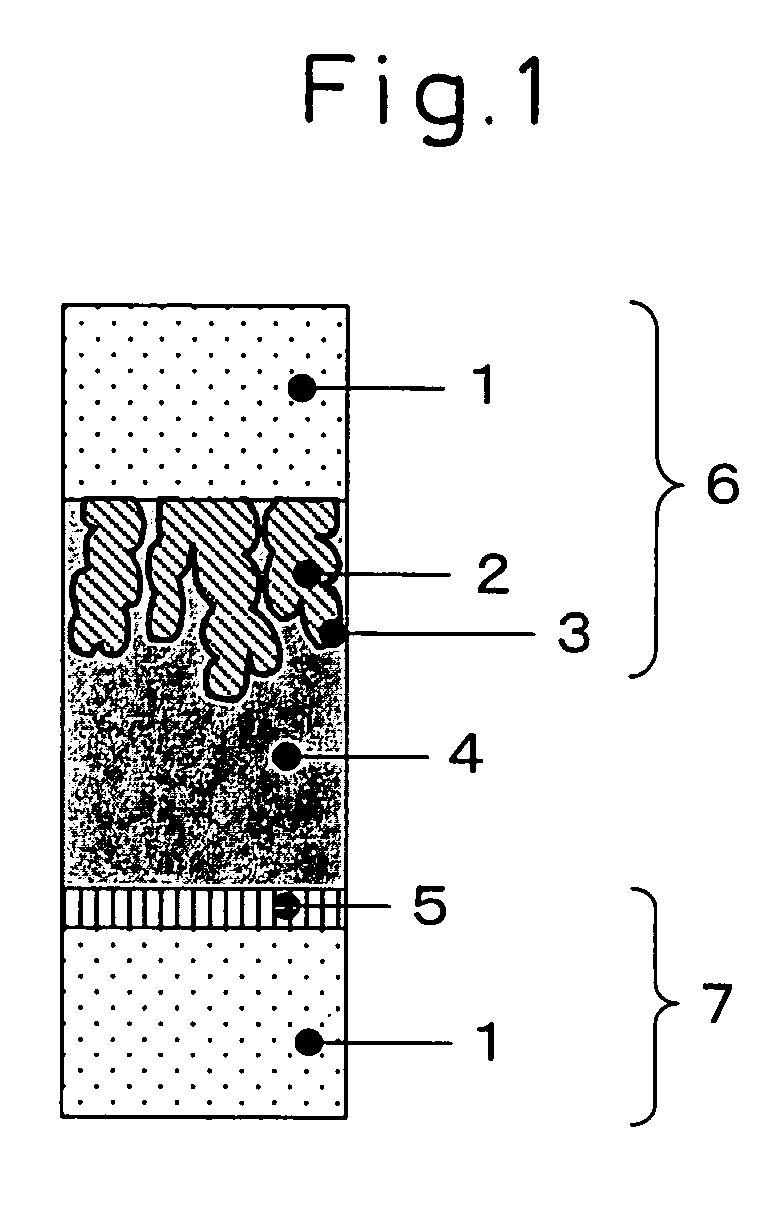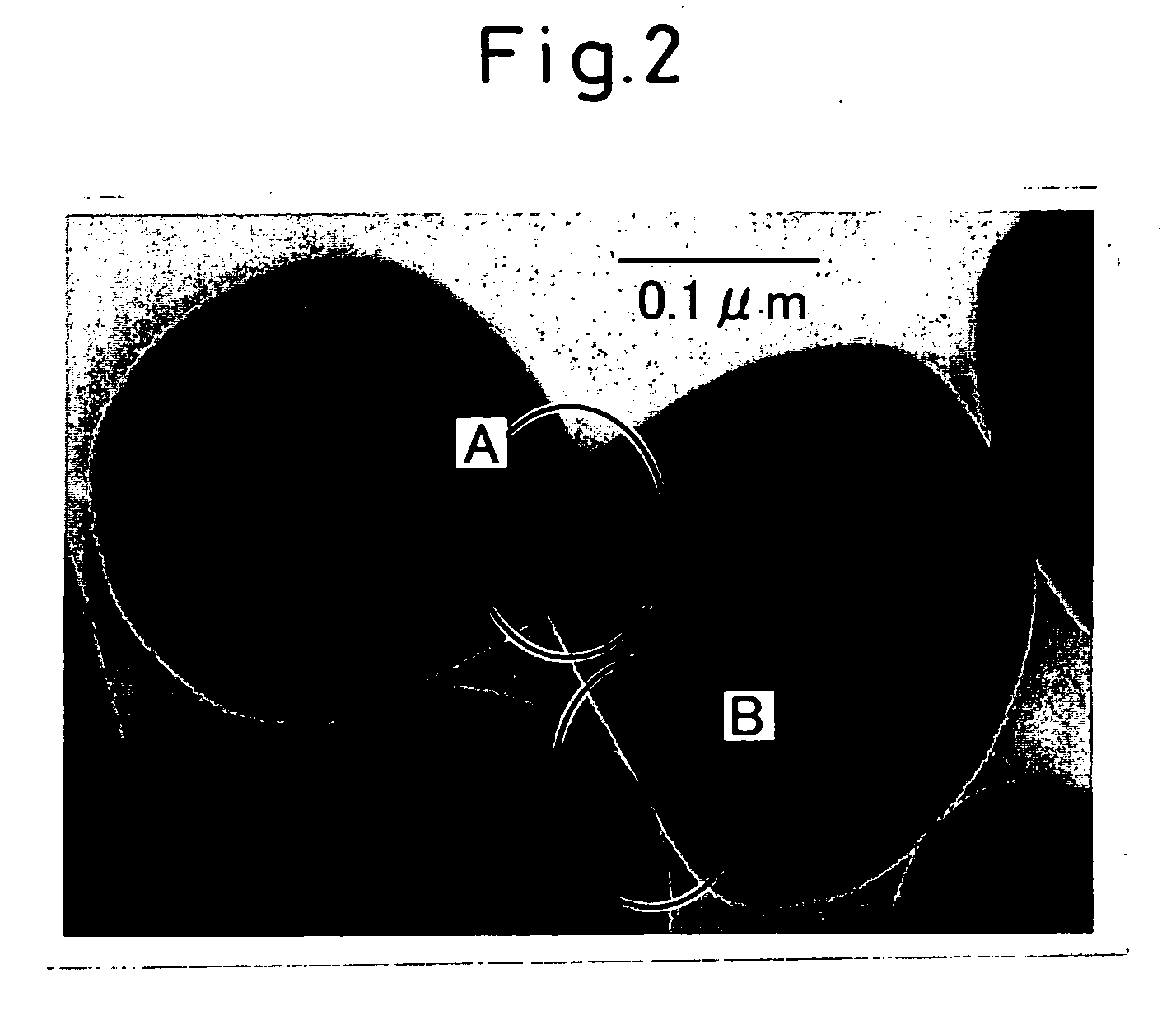Metal oxide structure containing Titanium oxide and production method and use thereof
a metal oxide and titanium oxide technology, applied in the direction of sustainable manufacturing/processing, final product manufacturing, grain treatment, etc., can solve the problems of reduced crystallinity on the surface of titanium oxide particles, high production, and disadvantageous less formation of necking structures
- Summary
- Abstract
- Description
- Claims
- Application Information
AI Technical Summary
Problems solved by technology
Method used
Image
Examples
example 1
[0129] Into a 800 cm3-volume polyethylene container (φ96×133 mm) of a ball mill (AV, manufactured by Asahi Rika Seisakusho), 1.5 g of titanium oxide (supertitania (registered trademark) F-10, produced by Showa Denko K.K.) having an average primary particle size of 150 nm obtained by a vapor-phase process, 13.5 g of titanium oxide (Supertitania (registered trademark) F-5, produced by the same company) having an average primary particle size of 25 nm and 500 g of 30 zirconia balls were charged and mixed at a rotation number of 80 rpm for 1 hour to perform a mixing mechanochemical reaction. The energy constant k1 was 15,360, the tap density of the titanium oxide structure obtained was 0.19 g / cm31 and ABG was 0.18 eV. In this titanium oxide structure, contamination due to abrasion or the like by zirconia ball was not observed.
[0130] Into a 800 cm3-volume polyethylene container (φ96×133 mm) of a ball mill, 15.0 g of the titanium oxide structure, 70 g of pure water, 10 g of ethanol and 5...
example 2
[0132] A dye sensitized solar cell was produced in the same manner as in Example 1 except for changing the titanium oxides of Example 1 to 1.5 g of vapor-phase process titanium oxide (Supertitania (registered trademark) G1, produced by Showa Denko K.K.) having an average primary particle size of 250 nm, 6.8 g of vapor-phase process titanium oxide (Supertitania (registered trademark) F-4, produced by the same company) having an average primary particle size of 30 nm and 6.7 g of vapor-phase process titanium oxide (Supertitania (registered trademark) F-6, produced by the same company) having an average primary particle size of 15 nm and changing the wet-mixing time to 5 hours. The photoelectric conversion efficiency of this solar cell was 4.0%. The measurement results of weighted average specific surface area of Particle Group B, tap density, BG after dry mixing, ABG and photoelectric conversion efficiency are shown in Table 1.
example 3
[0133] A dye sensitized solar cell was produced in the same manner as in Example 1 except for changing the titanium oxides of Example 1 to 3.0 g of vapor-phase process titanium oxide (Supertitania (registered trademark) F-10, produced by Showa Denko K.K.) having an average primary particle size of 150 nm, 2.0 g of vapor-phase process titanium oxide (Supertitania (registered trademark) F-5, produced by the same company) having an average primary particle size of 25 nm and 10.0 g of vapor-phase process titanium oxide (Supertitania (registered trademark) F-6, produced by the same company) having an average primary particle size of 15 nm. The photoelectric conversion efficiency of this solar cell was 4.2%. The measurement results of weighted average specific surface area of Particle Group B, tap density, BG after dry mixing, ABG and photoelectric conversion efficiency are shown in Table 1.
PUM
| Property | Measurement | Unit |
|---|---|---|
| tap density | aaaaa | aaaaa |
| optical band gap | aaaaa | aaaaa |
| optical band gap | aaaaa | aaaaa |
Abstract
Description
Claims
Application Information
 Login to view more
Login to view more - R&D Engineer
- R&D Manager
- IP Professional
- Industry Leading Data Capabilities
- Powerful AI technology
- Patent DNA Extraction
Browse by: Latest US Patents, China's latest patents, Technical Efficacy Thesaurus, Application Domain, Technology Topic.
© 2024 PatSnap. All rights reserved.Legal|Privacy policy|Modern Slavery Act Transparency Statement|Sitemap



